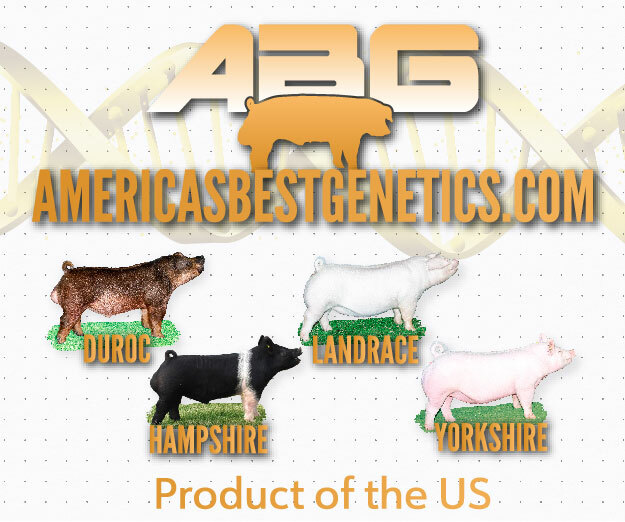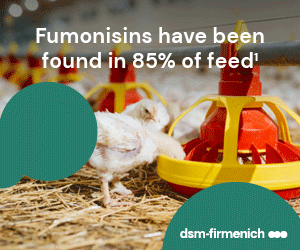



Forecasting swine disease outbreaks
Researchers want to move from monitoring disease in the US pig population to actually forecasting if and when a potential disease will occur, said Kim VanderWaal, DVM, assistant professor in the Department of Veterinary Population Medicine at the University of Minnesota.Since 2017, VanderWaal and other researchers have worked closely with several production systems in a specific region of the US and have partnered with the Morrison Swine Health Monitoring Project (MSHMP), she told Pig Health Today. The work was funded by the Swine Health Information Center and the USDA National Institute of Food and Agriculture.
“For many years, production companies have been reporting the infection status of their sow farms to the MSHMP. So now we have this incredible dataset showing whether any given farm is infected with porcine epidemic diarrhea (PED) virus in a given week. We combine these data with animal movement data, both into the sow farms as well as into neighboring farms, to build a predictive, machine-learning algorithm that actually forecasts when and where we expect there to be high probability of a PED outbreak,” VanderWaal said.
Better preparedness
The overall goal of the model is to be able to project the likelihood that a sow farm is going to break with PED 2 weeks in the future, she explained.
“We forecast this in two different ways. We give a dichotomous yes, it’s going to break, or no, it’s not,” she said. “We also give a continuous probability, ranging from zero-your farm is probably pretty safe-to one, which is danger.
“Risk factors can change through time, especially when you talk about things like animal movements,” she added. “We try to account for those changes, as well as changes in the spatial distribution of the disease in other farms through time.”
The purpose of the project is to gain a better picture of the current risk for a given farm based on animal movements and current epidemiological landscape, VanderWaal said.
“We hope this will enable producers to make better data-informed decisions about interventions or mitigation measures on their farms,” she said.
Other pieces of the puzzle
Models help rank different risk factors in terms of predicting whether or not an outbreak will occur, VanderWaal noted.
“We feed about 20 different variables into the model, and we let the machine-learning algorithm sort those variables and find the ones that are most relevant for predictions,” she said. “That [information] also tells us a lot about the epidemiology of the disease and what factors are important for influencing between-farm disease transmission.”
Some of that information was revealed in an earlier study during the emergence of PED in 2013. The most important factors during the initial phase of the epidemic were animal movements as well as local spread, which was critical knowledge when farms were in close proximity to each other, VanderWaal said.
“That’s where we started with the forecasting aspect of this [recent study],” she said. “We focus on the spatial neighborhoods around sow farms and what those neighbors are doing.”
Not without challenges
The forecasting pipeline has a sensitivity of around 20%, which means that researchers can detect one out of every five outbreaks that occur.
“That’s more information than we had before…so it’s a modest improvement,” VanderWaal said. “However, if we try to improve the sensitivity, we basically create more false alarms. The positive predictive value is 70%, which means that for every 10 times the model predicts an outbreak, it’s right seven of those times. Our partners don’t want to get a bunch of false alarms; if you ‘cry wolf’ too often, people stop responding. That’s one of the limitations we’re trying to balance.”
Another challenge is that researchers don’t have a standardized database of what biosecurity measures are being taken at what point, or how feed trucks are moving between farms, and anything else that could carry fomites between farms.
“We certainly have some missing pieces that we’re unable to quantify; therefore, we’re unable to put [that data] into the model,” she said.
Next steps
Increased participation in the MSHMP is essential for the program to grow, VanderWaal said, because the infection data is a critical component of the model.
“As far as animal movement data is concerned, the minimum of what we need is the origin location of the sites, the destination, the dates and the number of animals moved,” she said. “Most systems are recording that information in some format,” she said.
“Since November 2019, we have been delivering forecasts on a weekly basis to the partnering companies that were part of the pilot portion of the project. Their sow farms are ranked according to which ones are most at risk in any given point of time.
“We’ve had feedback on how [participating farms] are using these forecasts,” VanderWaal said. “One is to basically shore up biosecurity.”
Some systems use the ranked list to help remind staff that they need to be extra careful about biosecurity on the higher-risk farms. Conversely, it provides reassurance for lower-risk farms and gives them time to do a cost-benefit analysis and determine when more biosecurity measures need to be implemented.
Future goals
Future research will include a model for porcine reproductive and respiratory syndrome (PRRS), VanderWaal said, and getting a better handle on the immunology of PRRS.
“Given the variable level of immunity across herds and that pigs probably have been exposed to different variants in the past, that might dictate which strains of PRRS may be most successful at invading a particular population,” she said. “We’re doing a lot more work right now to understand the interface between the immunology and the epidemiology to understand which PRRS strains…are most successful, given the immunological profile of the population.
“Given the input data, the pipeline should be able to run through all of the necessary analytical steps to generate the data and the model we need to make the predictions,” VanderWaal said. “That’s useful for onboarding new systems [as well as] adapting to new epidemiological contexts.”
There is still work to be done in terms of making sure the data is formatted correctly and figuring out how to transfer movement data on a weekly basis, VanderWaal said, but the model has significant value for future herd improvement.
“You can learn a lot about the vulnerability of your system to a disease outbreak as well as identify key farms that might be super spreaders in the network, if you have the data,” she said.















